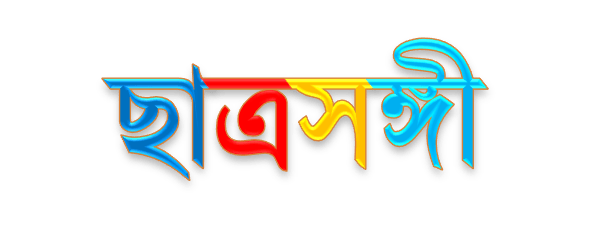একাদশ শ্রেণির স্বাস্থ্য এবং শারীরশিক্ষা সিলেবাস ও প্রশ্ন বিন্যাস 2023 – WBCHSE 11 Health and Physical Education Syllabus & Question Pattern 2023
একাদশ শ্রেণির স্বাস্থ্য এবং শারীরশিক্ষা সিলেবাস – WBCHSE 11 Health and Physical Education Syllabus
Theoretical (Full Marks – 40)
Unit-1: Concept and History of Physical Education (10 marks)
- Meaning, Definition and Traditional Concept of Physical Education. Its aim & objectives.
- Need & importance of physical education.
- Relationship with play, games & sports.
- History of Physical education in West Bengal in 20th Century.
- History of Ancient Olympic Movement.
Unit-2 : Health Education (10 marks)
- Concept of Health, Factors influencing Health, World Health Organization.
- Hygiene, Personal Hygiene : Care and maintenance of teeth, skin and eye, Community hygiene.
- Prevention and control of communicable diseases (Malaria, HIV/AIDS, Dengue, Chicken Pox, Cholera and Conjunctivitis) and Non-communicable diseases (Diabetes Mellitus and Cancer).
- School Health Programme : Health Instruction, Health Service and Healthful, School Living
- Drug Abuse : Alcohol and Tobacco, Adverse effects on Health
Unit-3 : Scientific Basis of Physical Education (10 marks)
- Exercise : Aerobic and Anaerobic, Effect of exercises on muscular and circulatory system.
- Mechanical concepts of fundamental skills (Sitting, standing, walking and running).
- Body types and body composition.
- Concept and assessment of BMI.
- Postural deformities (Flat foot, Bow Leg, Knock Knee, Kyphosis, Lordosis, and Scoliosis).
Unit-4 : Management of Physical Education Programme (10 marks)
- Organization of Sports and Physical Education Programme in School
- Lay out of play fields. (Kabaddi, Khokho, Volleyball, Football, Netball and Athletic Arena-Discus and Putting the Shot).
- Organizational set up of School Games.
- Meaning and types of Tournament (Knock out and League).
- Intramural and Extramural competition-need and objectives.
Practical (Full Marks – 60)
Group-A : Formal Activities-Marching, Bratachari and Callisthenic (10 Marks)
- Marching : Stand at ease, Attention, Left Turn, Right Turn & About Turn, Mark Time, Quick March and Halt.
- Bratachari : Raibishe & Badhubaran Folk dance (For Girls’), Raibanshe dance (for boys), Kathi.
- Callisthenics : Neck exercise, Arm Exercises, Trunk exercises, and Leg exercises.
Group-B : Athletics (10 marks)
- Running (block start, Techniques of Running, Finishing).
- Throwing Event (Putting the Shot and Discus Throw).
- (a) Putting the Shot : Holding the Shot, Placement, Initial stances, Glide, Release Action and Recovery.
- (b) Discuss Throw : Holding the discus, Initial stance, Preliminary Swing, Release and Recovery.
- Jumping Event (Running Broad Jump/High Jump).
- (a) Running Broad Jump – Approach run, Take off, Flight-in-air and Lanang
- (b) High jump-Approach run, Take off, Clearing the Bar and Landing.
Group-C : Yogasana and Gymnastics (5 marks)
- (a) Yogasana :
- (i) Paschimottanasana, Gomukhasana, Dhanurasana, Bhadrasana, Vakrasana
- (ii) Surya Namaskara
- (iii) Pranayama : Anulom Vilom
- (iv) Kapalabhati and Meditation
- (b) Gymnastics : Forward & Backward Role, Cart Wheel, T Balance, Hand Stand and Arch.
Group-D : Team Game ((Any One – 10 marks)
Handball, Netball, Football, Volleyball, Kabaddi, Kho Kho and Badminton.
Group-E : Evaluation of Physical fitness (10 marks)
Evaluation of Physical Fitness be made by conducting the following test :
- (i) Speed Test (30 Meters)
- (ii) Flexibility (Sit and Reach)
- (iii) Explosive Power (Sergeant Vertical Jump or Standing Broad Jump)
- (iv) Muscular Endurance Test (Bent Knee Sit up for 30 seconds) and
- (v) Cardiovascular Endurance Test (Skipping for one minute or spot jogging for one minute)
The Teacher will administer the test, record the performance of the students and evaluate them with the standard norm. The record of the students performance on each test shall be maintained through out the year.
A norm for evaluation shall be circulated by the West Bengal Council of Higher Secondary Education in due course of time.
Group-F : National Ideals & Leadership Development Activities (10 marks)
- (a) National Ideals : Participation in Observation National Days (5 marks) (National Youth Day, Netaji’s Birth Day, Republic Day and Independence Day)
- (b) Leadership Development activities organized by Government Organizations (Duration not less than 5 days) (Any one) (5 marks)
- 1. Participation in Adventure Sports.
- 2. Participation in Boys Scouts & Girls’ Guides
- 3. Participation in NSS Special Camping, NCC, Leadership Camp, Sports Com
- 4. Completion of Bratachari Nayak Course
- 5. Nature Camp
- 6. First Aid Camp (St. John Ambulance / Red Cross Society)
- 7. Community Service Programme
Group-G: Sports Participation (5 marks)
LEVEL OF SCHOOL SPORTS PARTICIPATION
| Marks | Zonal | Sub Divisional | District | State | National |
| Allotted | 1 Mark | 2 Marks | 3 Marks | 4 Marks | 5 Marks |
The Physical Education teacher will maintain student’s sports performance and will preserve the record by maintaining the register through out the year. The students will be issued certificate which will be produced to the examiner during examination. Marks will be awarded for highest performance on the basis of certificate issued by any organization recognized IOA or MHRD.
একাদশ শ্রেণির স্বাস্থ্য এবং শারীরশিক্ষা প্রশ্ন বিন্যাস | WBCHSE 11 Health and Physical Education Question Pattern
| Unit | MCQ (1 mark) | SA (1 mark) | DA (8 mark) | Total |
|---|---|---|---|---|
| শারীরশিক্ষার ধারণা ও ইতিহাস | 1×1=1 | 1×1(2)= 1 | 8×1(1/2)=8 | 10 |
| স্বাস্থ্য শিক্ষা | 1×1=1 | 1×1(2)= 1 | 8×1(1/2)=8 | 10 |
| শারীরশিক্ষার বৈজ্ঞানিক ভিত্তি | 1×1=1 | 1×1(2)= 1 | 8×1(1/2)=8 | 10 |
| শারীরশিক্ষার কর্মসূচির পরিচালনা | 1×1=1 | 1×1(2)= 1 | 8×1(1/2)=8 | 10 |
| Total | 4 | 4 | 32 | 40 |

